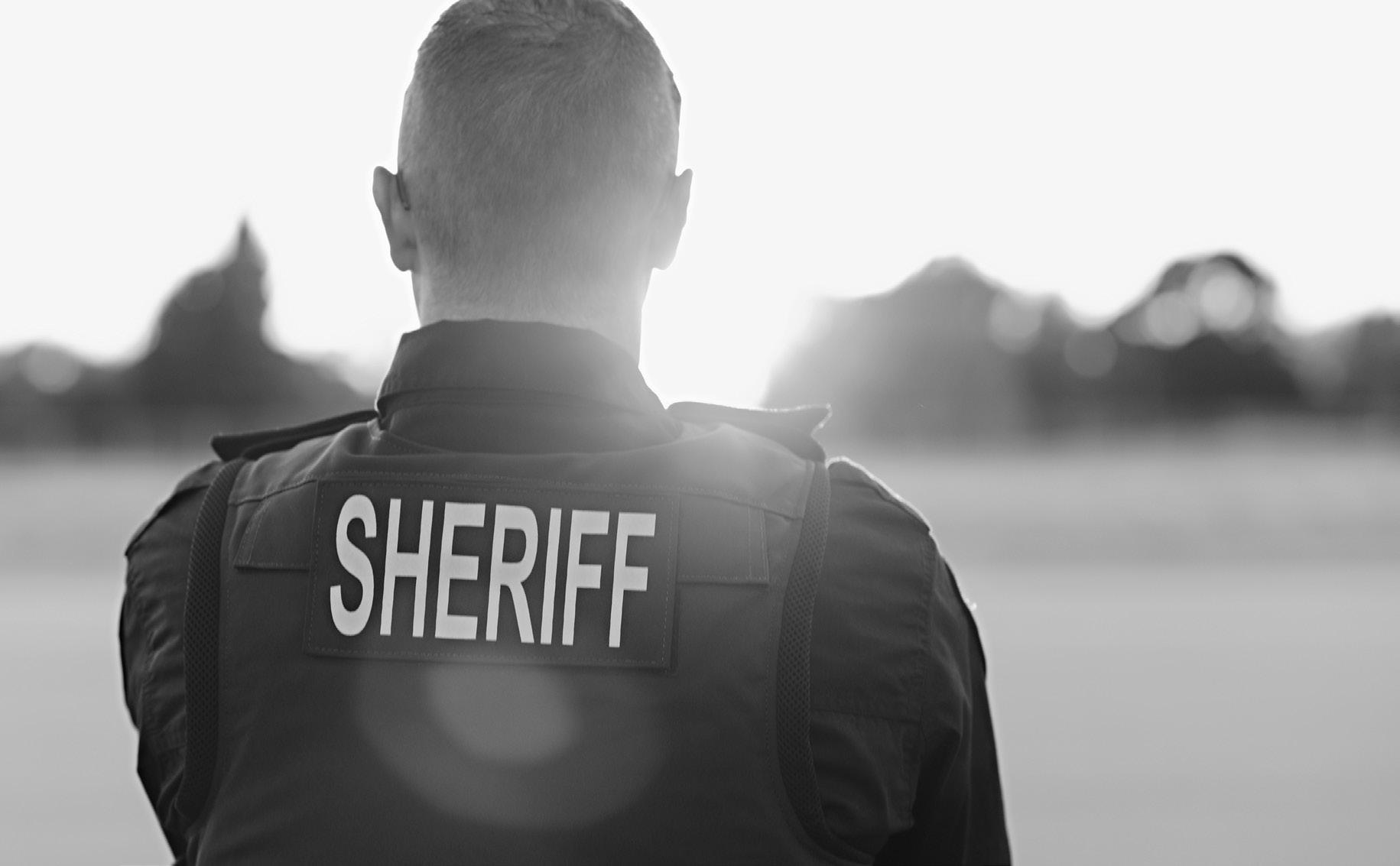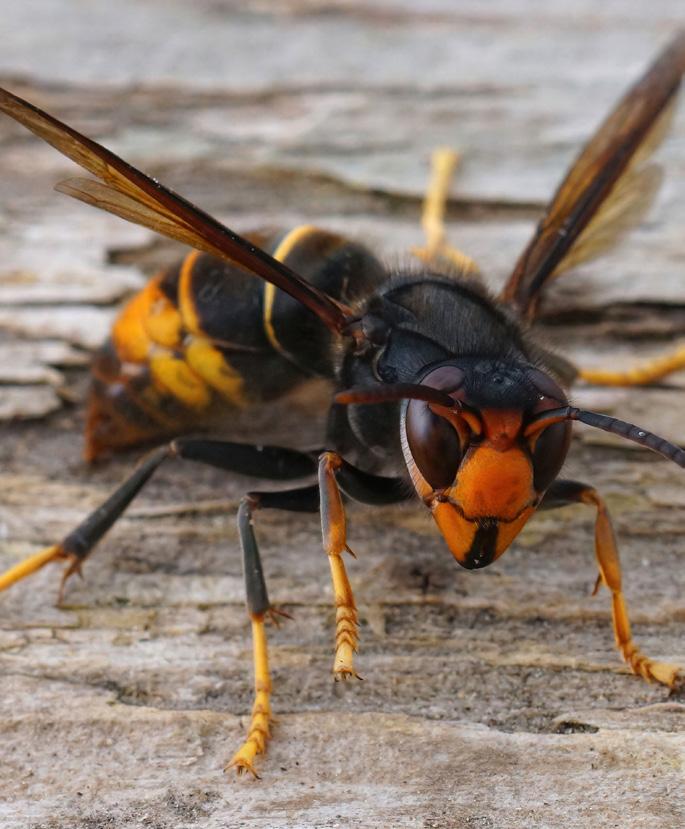Queen Anne &Magnolia news



By TJ Martinell
The Center Square
The state trucking industry is calling on the Legislature and Gov. Jay Inslee to detach Washington state from a California-based electric vehicle program due to a variety of practical and logistical factors that they argue threaten the supply chain system.
Under California’s Advanced Clean Trucks program, the trucking industry must progressively transition to zero
emissions for medium and heavy-duty trucks. Starting next year, zero emission vehicles must make up 7% of all Class 2b-3 truck and Class 7-8 tractor sales, while Class 4-8 truck sales must be 11% zero emission vehicles. By 2030, the sales percentages will need to be 30% for Class 2b-3 trucks and Class 7-8 tractors, and 50% for Class 4-8 trucks.
Washington Trucking Associations President Sheri Call wrote in an Aug. 15 letter to Inslee expressing concerns
about “vehicle costs, operational challenges, and low to nonexistent vehicle adoption. We feel these issues will place constraints on the industry and reduce supply chain resiliency in Washington state – one of the most trade-dependent states in the nation.”
Noting that the buying cycle for trucks can be as long as two years, “owners are placing orders for model year 2025 and beyond today” and “prompting
Page 5
November ballot will include 'warning labels' for initiatives
By Carleen Johnson
The Center Square
The battle over what will be printed on ballots for four statewide initiatives has ended, at least for this election season.
The final blow came late Thursday, when Tim Eyman was informed there would be no Friday morning hearing for his attempt to block what initiative supporters call "warning labels" on the ballot measures.
“Democrats passed this law in 2022, and it says we’re going to let the attorney general insert a sentence into the neutrally worded ballot title for any initiative that could impact tax revenue for the state,” said Eyman in an interview with The Center Square Friday morning.
The law requires disclosure statements of 15 words or less be placed on ballots if a measure repeals, levies or modifies a tax or fee, and if it would cause a net change in state revenue.
“It’s supposed to be just for initiatives that impact taxes, not for all initiatives,” argued Eyman. “The sentence is mandated to say-this measure would decrease funding for-then the AG gets to add words to describe which programs are earmarked for that tax.”
For the capital gains repeal initiative, ballots will include the AG’s language saying the measure will reduce funding for K-12 education, childcare and school construction. Eyman contends that the additions are meant to sway voters to vote against the measures.
“We knew in March this year, with three initiatives heading to the ballot, there would be these sabotage sentences included,” said Eyman.
Initiative sponsor Rep, Jim Walsh, R-Aberdeen, filed suit in Thurston County Superior Court in June.
The judge rejected those arguments, but Walsh and company asked the WA Supreme Court to take the case up directly because the secretary of state’s office had said it needed to

Sunday Worship at 10am Live Streamed on our Facebook page and YouTube. Simply look for Magnolia Lutheran Church.
Twelfth Church of Christ, Scientist
In Person and Online Church Services
All are welcome & warmly invited to join these healing services
For best audio results, please join by clicking on the link from your computer or smartphone and choose “Call Over Internet”
All Zoom Services Meeting ID: 418 806 2637 https://us02web.zoom.us/j/4188062637
Sunday Services 11:00am – 12noon Pacific
Wednesday Testimonies 7:30pm – 8:30pm Pacific
Christian Science Quarterly Bible Lessons
Our weekly Bible Lesson Sermon may be found here: https://quarterly.christianscience.com/
Additional Healing Resources: ChristianScience.com CSWashington.com SeattleMetroReadingRoom.org
For additional assistance, please contact us at seattle12cs@gmail.com or 206.283.2300 ChristianScienceTwelfthSeattle.com
Queen Anne Dental Group

Dr. Frank J. Calvo & Family
Cosmetic, Implant, & General Dentistry
400 Boston St. 206-284-7812 www.QADG.net



Chiropractic AND Massage Therapy
Darrell Gibson, D.C. • Sarah Gibson, D.C. Graeme Gibson, D.C.
David E. Goodall III, LMT
Sarah Rose Nottingham, LMT Lauren E. Traynor, LMT
SERVING THE FAMILIES OF QUEEN ANN E SINCE 1991 1905 Queen Anne Ave N • 206.282.8275 www.QueenAnneChiro.com DENTISTS



By Spencer Pauley The Center Square
The King County Sheriff’s Office will collaborate with other entities to boost its security presence in downtown Seattle’s more dangerous areas as part of its recent transit corridor safety pilot program.
Transit riders around the downtown Seattle area will see an increased police and security presence as part of the county’s ongoing Operation Safe Transit initiative. More specifically, security will be more present around Seattle's Third Avenue, the King County Courthouse, King County Metro bus stops and the downtown transit tunnel.
Operation Safe Transit was launched by the King County Sheriff’s Office on May 1 as a pilot program that focuses on combating crime on transit and at transit locations. Since then, approximately 85 arrests have been made.
Last week, King County Sheriff deputies arrested four notable individuals as part of its Operation Safe Transit initiative. Three of the arrested suspects were known drug dealers and the fourth had a warrant for assault. Drugs and two handguns were recovered.
“We recognize how the situation in this
from Page 1
know by Aug. 23 if those statements would be on ballots.
The court ruled against that lawsuit last week, saying it wasn't properly challenged, but Eyman’s challenge continued.
His argument was that the state constitution reserves the first power of the people to be initiative.
“It says the legislature can pass laws that facilitate the process, not hamper the process and it certainly doesn’t facilitate anything to have the attorney general sabotage initiatives on taxes,” said Eyman.
Eyman was asking for preliminary injunction which would have prevented the Secretary of State from printing ballots that
part of downtown is affecting the public, as well as employees and we are taking every step possible to help improve safety in this area,” King County Sheriff Patti Cole-Tindall said in a news release. “The ultimate goal here is to abate crime and fear of crime on our transit system.
Through July, there have been 225 cases of violent crime in the downtown area at a section of Third Avenue. Out of the 225 cases, there was one homicide, 142 cases of aggravated assault and 69 robberies, according to the Seattle Police Department Crime Dashboard.
The King County Sheriff’s Office’s new pilot program collaborates with other departments including the Seattle Police Department, King County Metro and Sound Transit, among other partners.
Sound Transit and Metro Transit’s bike teams will begin playing a significant role in the work to reduce crime around the region’s transit corridor. According to King County, the bike teams’ visibility often serves as a crime deterrent.
“Both [King County Executive Dow Constantine] and Sheriff Cole-Tindall are committed to this joint effort, aiming to make 3rd Avenue a place that is welcoming and accessible to all,” the county executive’s office stated in a news release.
include the AG’s statements.
“I was optimistic that my suit would go well and then 4pm Thursday I find out the AG is saying they don’t have enough time to defend this law,” he said.
The judge agreed to delay the hearing, with no future date rescheduled.
“It just so happens that extra time is the time when ballots are being printed,” said Eyman.
“It’s eminently frustrating.”
Initiative 2066 to protect energy choices and preserve natural gas will not include a tax impact statement from the AG’s office, but the other three measures will.
One would repeal the state’s capital gains tax, another would end its cap-and-trade program, and the third would make participation in the state-run, long-term care program optional.
King County spends nearly
By Spencer Pauley The Center Square
A recent report on King County’s homeless supportive housing initiative reveals that the county spends an average of nearly $300,000 in sales tax per housing unit.
King County’s Health Through Housing Initiative receives onetenth of a cent of sales tax revenue for the purchase and operation of hotels to convert into emergency and permanent supportive housing. The county’s goal is to create and sustain up to 1,600 affordable and supportive housing units for homeless people through the program.
As of the end of 2023, Health Through Housing acquired 1,495 housing units, with 1,358 units currently in operation.
The report found that the average capital perunit costs among the properties were $273,021 from 2021 to 2023.
The average annual operating costs for the properties last year were $20,759 per unit.
According to the Health Through Housing’s frequently asked question webpage, purchasing hotels during a depressed market averages around $270,000 per unit. In comparison, the average cost to build a new permanent supportive housing facility is approximately $400,000 per unit or more, depending on the location.
Health Through Housing's total 2023 revenue totaled $160.3 million, including $70.3 million in tax revenue, $85 million from bond proceeds, and $4.3 million in interest. The $160.3 million were approximately $2.4 million higher than in 2022.
In 2023, the county spent approximately
$17.6 million on capital expenditures and $44.4 million on operating expenditures through the initiative. According to the report, that remains consistent with the initiative’s projected goals From 2020 to 2023, the county acquired and contracted 16 sites across seven cities. 911 people were served through Health Through Housing in 2023, an increase of 108 people from 2022.
Throughout the buildings, 480 people were permanently housed or moved on to permanent housing elsewhere through Health Through Housing resources. Out of the 480 people, 466 were chronically homeless.
According to the July report, 91% of Health Through Housing residents in permanent supportive housing units maintained their housing or moved to another permanent housing destination.
The Health Through Housing 2023 report attributes the economic circumstances of the COVID-19 pandemic to allowing the initiative to grow the region’s stock of affordable and supportive housing units in months rather than years. This is due to the pandemic allowing hotels and apartments to become available for purchase at lower rates.
“I remain confident that Health Through Housing is a powerful component of our regional strategy to address the crises of affordable housing and chronic homelessness,” King County Executive Dow Constantine said in a transmittal letter to the King County Council. “I look forward to continuing to report on the initiative’s progress, and my staff will keep working to overcome these challenges as they bring more people inside.”

Courtesy Lynda Balslev
By Lynda Balslev
While you might call this salad a side dish, it deserves to be the main attraction. It's a sumptuous platter composed of roasted carrots, baby arugula and bright herbs scattered over a bed of toasted pearl couscous (also known as Israeli couscous). Each component is given respect. The extra step of toasting the couscous lends a golden, nutty flavor to the bowl, which ripples with spice. The natural sweetness of the carrots is amplified by roasting the roots to crisp tenderness. Wisps of baby arugula weave throughout the salad, adding a peppery bite, and an herbaceous shower of garden herbs adds leafy freshness. If possible, use rainbow carrots to add more color to the salad. Make sure the carrots are even in thickness, so they will cook at the same rate. You can halve them lengthwise or cut them in half crosswise on the diagonal. Many herbs will work in this salad, such as dill, chervil, mint, parsley and cilantro. Use what you like.
Active Time: 40 minutes
Total Time: 40 minutes
Yield: Serves 4 to 6
▶ Extra-virgin olive oil
▶ 1 cup Israeli (pearl) couscous
▶ 1 1/2 cups water
▶ Kosher salt
▶ 1 clove garlic, grated
▶ 1 small red jalapeno pepper, minced (or 1/4 teaspoon cayenne pepper) -- optional
▶ 1 tablespoon lemon juice
▶ 2 teaspoons finely grated lemon zest, divided
▶ 1/2 teaspoon ground cumin
▶ 1/2 teaspoon ground coriander
▶ 1 to 1 1/2 pounds thin rainbow carrots, ends trimmed, peeled
▶ Freshly ground black pepper
▶ 4 cups baby arugula
▶ 1/2 lemon, plus wedges for serving
▶ 1/3 cup chopped herbs, such as parsley, cilantro, dill, mint, chervil
▶ 2 to 3 tablespoons toasted pine nuts
Heat 1 tablespoon oil in a skillet. Add the couscous and toast over medium heat until golden, 1 to 2 minutes, stirring frequently. Add the water and 1/2 teaspoon salt. Cover the skillet and simmer over medium-low heat until the liquid is absorbed and the couscous is tender, about 10 minutes. Transfer the couscous to a bowl. Drizzle with a little oil if sticky, then add the garlic, jalapeno or cayenne pepper (if using), the lemon juice, 1 teaspoon lemon zest, cumin and coriander. Let stand at room temperature while you roast the carrots.
Heat the oven to 425 degrees. Place the carrots in a large bowl. Lightly drizzle with oil and season with salt and black pepper. Spread the carrots on a rimmed baking sheet and roast in the oven until lightly charred and crisp-tender, about 20 minutes, depending on thickness. Remove and cool to room temperature.
Scatter the arugula on a serving platter or in a wide, shallow serving bowl. Spoon the couscous over and around the arugula. Arrange the carrots on top. Squeeze half a lemon over the salad, then sprinkle the herbs, pine nuts and remaining lemon zest over the salad.
Lynda Balslev is an awardwinning writer, cookbook author, and recipe developer based in northern California. Visit TasteFood at TasteFoodblog.com.
Suppose for a minute you once wrote a book entitled Women in the Garden. And after a few decent reviews, low and behold, you are invited to sign copies of it at a prestigious garden show.

Since that initial invitation, I learned that garden shows are numerous as the charities they support. And for two summers, I packed up my books, covering freeways from Seattle to San Francisco, turning down a few because I could see myself taking on more of these “shows” than I was wired to handle. Because as lovely as some of them were, it wasn’t the gardens that most intrigued me, but the social climate entwining each, varied as the plant life. And a deepening of my understanding that just about everything that happens in this world, no matter how inconsequential, is a story.
Completely naive about garden shows, I thought the gardens on display would be similar to, say, the Community Garden near my neighborhood, a vibrant, unpretentious garden; its gardeners eager to share enthusiasm with nosey onlookers like me.
Then I found myself on the East Side of our Emerald City. And trust me, had I not been invited as an author, I’m pretty sure my life would never have intersected that life.
Those of you not familiar with the city of Medina need to know that Bill Gates lives an estate away from the sheared-for-golf lawn I propped my book table on. When I drove up, foremost on the owner’s mind was that my car was not fitting enough to be parked anywhere near her tiled piazza. She was obviously suffering from some kind of garden show performance anxiety. She shooed me off with a little wave of her hand as if to say, “It’s no big thing to move it.” Even though we both knew it was a big thing. There is no street parking in the neighborhood without a permit, so where would I park? Right before she pounced, I remember sensing the stillness of the acreage and when I opened my
car door the wind made a quiet, swishing sound as it moved through the trees.
I proceeded to unload my box of books before driving off to hide my Dodge Colt, the walk back from the Community Center seeming twice as long now that I was anxious. Feeling on all counts, inferior. “I don’t want to go back,” I said to myself.
And the garden?
Well, the garden was a portal into another landscaped universe, as far from where one might say, “Hey, honey, come and see the size of my delphiniums!” and deep into the world of “Behold what a landscape architect and a lawn maintenance crew can contrive.”
To me, cordoned off gardens showcasing indigenous foliage are tidy but ungratifying. If I’m promised a show, I imagine flora that blooms with colors that reach into me. But what I mostly saw let me down in a way: fifty shades of forest green.
Maybe it’s my proletariat roots reaching deeper than appreciation can go, but I found myself wondering if the owners of the grounds gaze over their gardens with pride but from a distance, unable to grasp a hands-on, I-grewthis-from-seed kind of knowledge. More than once I asked myself, do you think these new houses need to be so large in order to house the size of the void such a lack of personal, practical involvement can create?
The next weekend, and what a relief it was, I sunned myself behind a 1920’s bungalow in Wallingford next to where a wooded lot met the green of a much-loved garden; where the owner didn’t rope off her aromatic ground cover but invited guests to step on it just so we could know the swiftness with which a scent can begin and end. The interconnection of gardener to garden? Fertile as her compost in clear sight and steaming.
And in my eyes, nothing is more satisfying than pride with a scent like that.
Mary Lou Sanelli's newest collection of essays, In So Many Words, is due out in September. A professional speaker and a master dance teacher, she has written a column for this paper for 16 years, also contributing to The Seattle Times, NPR, and other newspapers and magazines. Please join her book celebrations at Elliott Bay Book Company on Sept. 13 at 7 p.m. and at Third Place Books (Lake Forest Park) at 7 p.m. Oct. 3. www.marylousanelli. com
By Secretary of State
Washington Secretary of State Steve Hobbs urges Washington’s voters to be wary of dubious election information, including deepfakes and other misinformation, that have already been spotted during the 2024 elections cycle.
“As we move …. toward the November 5 General Election, I am concerned that a deluge of manipulated and false information may be inserted into social media from foreign actors and other sources,” Secretary Hobbs said. “Artificial Intelligence is getting easier and cheaper to manipulate for a broad number of malicious actors. The rest of us must be careful to verify what we see before we take it to heart.”
Hobbs said that voters must understand that faked material is likely to become pervasive in some corners of social media, citing a July 26 posting on the social media platform X, formerly Twitter, by platform owner Elon Musk that shared a manipulated recording of presidential candidate Kamala Harris.
“If the owner of a social media platform themself is going to share misleading material, it
TRUCKERS from Page 1Æ
WTA members to evaluate their options given cost and infrastructure constraints.”
Citing a “lack of infrastructure, vehicle cost, availability, and operational limitations,” Call wrote that “members are left with only a couple options” in order to comply that ultimately could lead to trucking companies shifting their operations to states that are not required to comply with the Advanced Clean Trucks, or ACT, mandate.
According to Call, zero emission trucks are two and half times more expensive than clean diesel fuel trucks, while they have two and half tons less cargo capacity and only offer 150–200mile distance per charge.
She wrote that holding Washington truckers to the same standards as California isn't appropriate because "state officials there have been building support for decarbonization for decades, including funding robust incentive programs for clean commercial trucks."
“Washington does not have the regulatory infrastructure in place to discourage outside
signals to the rest of us that other materials allowed there may not be trustworthy,” Secretary Hobbs said.
“I urge Washington's more than 4.8 million registered voters to seek out trusted information sources — such as established news outlets and official government institutions — as they navigate upcoming elections.”
In August, Secretary Hobbs joined Secretaries of State from Minnesota, Michigan, New Mexico, and Pennsylvania to send a public letter to Musk calling for X’s AI search assistant, “Grok,” to direct voters seeking elections information to CanIVote.org, as the administrators of ChatGPT and OpenAI already do. Shortly after President Joe Biden announced his withdrawal from a reelection campaign on July 21, Grok generated false information about ballot deadlines in Washington and eight other states that was shared on multiple social media platforms.
“Voters should not be misled about how our elections function,” Secretary Hobbs said. “The owners of social media platforms must take responsibility for safeguarding their audiences against the spread of false information, and this includes stopping their own AI mechanisms from generating it.”
dispatch of trucks that do not comply with any reduced carbon or zero emission standard,” Call wrote further. “ACT will drive up costs on every consumer good or service that relies on M/HD commercial trucks.”
The Center Square reached out to Inslee’s office for comment. In an email, Deputy Communication Director Mike Faulk wrote that “we are preparing a response to address the concerns they have raised and are confident that between the public and private sectors’ collective efforts to electrify the transportation sector, the Advanced Clean Truck requirements are achievable.”
He added that “there are a variety of compliance options, including giving credit from previous years sales to meet the first target in 2025 and creditsharing across weight classes allowing for manufacturers to ramp up availability.”
Faulk added that Washington is collaborating with California and Oregon to secure federal funding for an EV truck charging corridor along Interstate 5. Semitrucks typically rely on a DC-fast charger.
In 2023, request legislation from Secretary Hobbs, Senate Bill 5152, created Washington’s first limitations on the use of deepfakes in political campaigning. The law enacted disclosure requirements for any manipulated videos and gave candidates targeted by undisclosed deepfakes a right to sue for damages.
“My staff and I have monitored trends across the globe, and the spread of deepfakes into state and local races is happening now in America,” Hobbs said. “There are already numerous real-world examples. In June, we saw a video spread in Utah falsely indicating the governor had been involved in signature-gathering fraud. In July, videos of President Biden and Vice President Harris portrayed them making statements they did not say. During the presidential primary, a political consultant distributed a deepfake robocall of President Biden discouraging New Hampshire voters from participating in the election. This is a pervasive threat.
“These bad actors can and will sow distrust with our local elections,” Secretary Hobbs continued. “If something you see raises questions about your access to a fair and trustworthy election here in Washington, please visit a legitimate
elections office and learn the truth.”
Secretary Hobbs urges voters to reach out to these trusted sources:
The Office of the Secretary of State’s elections website, which includes important election deadlines, printable PDF registration forms, and more. Washington county election offices provide ballots upon request and help you make changes to your registration.
“The right to vote is the cornerstone of our democracy, and we shouldn’t allow anyone to interfere with it,” Secretary Hobbs said.
Washington’s Office of the Secretary of State oversees areas within state government including managing state elections, registering corporations and charities, and governing the use of the state flag and state seal. The office operates the State Archives and the State Library, documents extraordinary stories in Washington’s history through Legacy Washington, and administers the Combined Fund Drive for charitable giving by state employees and the Productivity Board state employee suggestion program. The Office of the Secretary of State also oversees the state’s Address Confidentiality Program to help protect survivors of crime.
Head to the Waterfront this Friday (Aug 30). With live performances, food trucks, and activities for all ages, it’s the perfect way to enjoy the summer while soaking in stunning views of Elliott Bay.

Head to Seattle’s go-to arts and music festival (Aug 31 & Sept 1), lighting up Labor Day weekend with live music, art, comedy, and more.

Head to SIX this weekend (Sept 1) here local game developers show off their latest indie games. It’s a chance to play cool new games, meet the creators, and hang out with fellow gamers!
Visit the Evergreen State Fair (Aug 29 - Sept 2) in Monroe for a classic fair experience with rides, tasty treats, live entertainment, and animal exhibits. Don't forget to pickup PPC's Guide!
Visit the Washington State Fair (Aug 30 - Sept 22) in Puyallup for a fun-filled experience with rides, delicious fair food, live music, and more.
the Bremerton Blackberry Festival (Aug 31 - Sept 2) for a berry good time filled with live music, delicious food, and fun activities. Enjoy local vendors, blackberry-themed treats, and community spirit.





“What’s your greatest flaw?” asks the interviewer. “I’m a bit of a perfectionist,” the interviewee answers, looking away and faux-humbly shrugging their shoulders to indicate they just can’t help giving 120 percent to the job. Don’t try this at your next interview, however. Today’s interviewers see right through this, but it used to be a thing.

Perfectionism is a doubleedged trait. Steeped in an aura of apparently good intention – to be or do your best – it seems unassailable. Yet perfectionism can be a trap, a block to creativity and one’s overall happiness.
Artists embracing the Asian concept of wabi sabi, which welcomes touches of imperfection, know the power of imperfection. It speaks to the authenticity of the vulnerability, impermanence and general unpredictability of life. Or as Persian poet Rumi wrote, “pain is where the light enters.” Think of an impenetrable fortress. It is awe-inspiring, but a ruined castle wall touches our hearts with thoughts of what the wall has endured over the centuries.
Author/ “shame researcher” Brene Brown highlights the strength of bringing fear and shame to light. Doing so creates stronger relationships, makes us more likeable and relatable, and enables progress that “perfect” doesn’t. Think about the difference between having a dinner of polite small talk versus conversations delving into deep, even scary topics –which will you remember? Which will help you get closer to your family and friends?
Consider some of the pitfalls of being (or trying to be) perfect.
Often perfection is a vague ideal that shifts with fashion and mood. It’s a temporary construct that is both difficult to define and attain, which once realized, is all too easy to chip away at its veneer. The idea of being a “perfect” partner, employee, parent, or friend is a slippery concept that can make us crazy chasing it.
Social media feeds the dark side of perfectionism fostering comparison and unreasonable ideals of physical beauty. Ironically, authenticity has become such a trend in commerce and social media and that we are seeing a kind of performative imperfection, as in “Watch me make a mistake,” or creating posts that intentionally say or show something incorrect to boost engagement. But, like the interviewer in the example above, we can sense true authenticity and vulnerability. IS IT REALISTIC?
When I was in my early 20s, I almost quit playing tennis with my family. I would pop in a couple of times a year and become mortified at how many balls I was hitting into other courts. I wasn’t taking lessons
or playing consistently, but I expected I should be as good as my youngest sister, father and grandfather who played all the time.
I was similarly terrible when I joined my high school swim team on a whim, but on the contrary, it didn’t faze me. I easily stuck with the long practices, becoming Most Improved Player that year and eventually team captain. The difference between swimming and tennis was that I had no worries or expectations around swimming, so no feeling of being watched or judged.
One day after playing, I somehow talked myself out of my misery. I realized that the only way to get better at tennis was to get through the whoofs and misses and keep playing. I would either improve, and at the very least have some fun – but only if I relaxed about the outcome.
WHAT
Sometimes, fear of failure keeps us frozen, unable to act. This translates to, “If I can’t do it well, why do it at all?” Other times, it keeps us in a middling zone of competency – the domain of the average, preventing us from trying things outside our comfort zones. You may have heard the phrase, “perfect is the enemy of the good.” Rather than fussing over getting all the details in place “perfectly” and the stars to align, it’s better to just do the thing – even if you don’t get it exactly right. Have the conversation, write the email, start a website. Progress is better than perfection.
In addition to the fun of trying something new, fear of being imperfect may be robbing you of your best work or moments of inspiration. If you are obsessed with creating an external ideal of perfection, it a) has been done before, and b) lacks your creative spark. To create something of your own, you need to let the idea of perfection go and let yourself play without focusing on how the outcome will be received. Consider carving out some time to riff on the guitar, sketch, or dance like no one is watching.
David Spindler, a cognitive specialist working with high-performance athletes, recently said on the Rich Roll podcast that people will have much better results striving for “precision over perfection.”
One way to implement this is focusing on measurable goals. Identifying them forces you to prioritize your most important goals while giving you something tangible to work toward and assess. When you find yourself struggling with feelings of inadequacy, ask yourself what vision you are trying to live up to and is it yours or someone else’s? What are the goalposts you are shooting for?
Once you pick an actionable goal that make a difference to you, give yourself permission to mess up and try again, and see what fun life brings you.

By Carleen Johnson The Center Square
Ten days from now, Sound Transit will open the Lynnwood Link Light Rail Extension.
Five years after construction began on the line, rail service to Lynnwood, Mountlake Terrace and Shoreline makes its public debut during a ribbon cutting ceremony at 11. a.m. on Friday, Aug. 30.
“This is the first light rail extension that’s actually leaving King County and getting to Snohomish County, so that is a major accomplishment,” said Sound Transit Media Relations Manager John Gallagher.
Gallagher told The Center Square the next couple of years will bring more new lines opening and more connectivity for Link light rail.
“We’ve got this opening and then we’ve got the rest of the opening across Lake Washington to connect to the eastside, and then in early 2026 we will have Federal Way opening.”
The Federal Way Link Extension is about two years behind schedule.
It will add nearly eight miles to the system via mostly elevated tracks between SeaTac and Federal Way, with three new stations in Kent Des Moines near Highline College, Star Lake, and Downtown Federal Way.
When Federal Way Link starts service in early 2026, Sound Transit promises commuters will be able to get from the Federal Way Downtown Station to Sea-Tac Airport in 16 minutes, and from Kent Des Moines to Seattle in 42 minutes.
The Lynnwood Link opening will mark a big shift in light rail fares, going from a structure based on distance traveled to a $3 flat fare per ride. This will mean Link riders with an ORCA card will no longer need to “tap off” at the end of their ride.
The station's completion marks the conclusion of a $3 billion project that voters approved in 2008.
What did taxpayers get for their money?
“It’s eight-and-a-half miles, it’s four new stations and approximately half of the alignment is at grade, the other
half is elevated,” Gallagher said. “The four new stations are two in Shoreline at 148th and 185th, one in Mountlake Terrace at the existing transit station and then the Lynnwood City Station.”
He continued, “There are two 500 stall parking spaces at the Shoreline stations and then 1,670 parking spaces at the Lynnwood station, because that’s going to be a transit hub."
He said the cost of the project was revised up by $500 million in 2017.
For those who haven’t ridden light rail for safety reasons, Gallagher said Sound Transit made changes to address that.
“Last year we changed our security contracts. We now have about 550 security personnel available throughout the system, so that really helped us,” Gallagher pointed out. “We’re certainly cognizant with new riders, we want to assure them that we’re paying special attention, especially with the new extension that people feel comfortable and welcome."
For opening weekend, riders can expect to see far more Sound Transit employees than usual, and plenty of pomp and circumstance.
The agency will have workers there to make sure no one gets lost, plenty of security and Chamber of Commerce members at each stop to celebrate the grand opening.
Is it worth the investment?
According to 2022 reports published by Washington Policy Center, since 2017, Sound Transit’s full system expansion went from costing taxpayers $92 billion to $142 billion and project completion was stretched from 2041 to 2046.
Anticipated tax revenue – which includes sales and use tax, motor vehicle excise tax, property tax and rental car tax – increased from $60.6 billion to $88.9 billion. This huge increase will not add more elements to the plan, nor will it increase projected ridership.
According to the Puget Sound Regional Council, Sound Transit is constructing a rail system that will likely carry fewer than 5% of regional trips.
Are northern giant hornets bugging out of
By Brett Davis The Center Square
There is cautious optimism that the invasive and predatory northern giant hornet has been eradicated from Washington state.
But that’s not official yet.
According to the Washington State Department of Agriculture, the Evergreen State must go three years without detection to meet the regulatory definition of eradication.
There have been no confirmed sightings of the northern giant hornet, previously known as the Asian giant hornet or the more colorful “murder hornet,” since late summer 2021 when four nests were found and destroyed in Whatcom County in northern Washington along the Canadian border.
“No hornets have been detected so far this year, but the season is still early,” Karla Salp, WSDA communications consultant, emailed The Center Square.
Northern giant hornet season typically runs from July through November.
“If we don’t detect any hornets this year, we would likely declare them eradicated in conjunction with USDA [U.S. Department of Agriculture],” Salp explained. “That won’t be known until the end of the year, once all of the trapping is complete and the field traps are brought in and checked, which will probably be the end of December.”
Native to temperate and tropical regions of East and Southeast Asia, including parts of China, India, Japan and Sri Lanka, Vespa mandarinia was first detected in the Pacific Northwest in late 2019, coinciding with the start of the COVID-19 pandemic.
The insect is the world’s largest hornet, with queens reaching up to 2 inches in length. The apex predators are considered an invasive species in North America and are well known for their aggression and ability to kill bees and other hornet species.
A small group of northern giant hornets can, in a matter of hours, kill an entire honey bee hive.
Honey bees pollinate many of the crops in Washington’s multibilliondollar agriculture industry.
The Washington Invasive Species Council notes the potential impact if the non-native insect is allowed to get a foothold in Washington.
“Northern giant hornet poses a serious threat to Washington honeybees and the honeybee

industry,” the organization’s website states. “While the extent of possible damage to Washington’s honeybee industry is not yet known, a similar hornet in Europe has reduced beehives by 30 percent and up to two-thirds of the honey yield.”
Washington's 2023 honey production, at 2.24 million pounds, was 19% lower than 2022, according to a USDA news release from earlier this year. There were 83,000 honey-producing colonies, 3,000 lower than the previous year. The yield per colony averaged 27 pounds, compared with 32 pounds per colony in 2022.
According to an October 2023 USDA news release, the value of Washington's 2022 agricultural production totaled $12.8 billion, shattering the previous record high of $10.4 billion in 2015 and up 27% from the revised previous year's value of $10.1 billion.
The value of Washington's crop production in 2022 was $8.6 billion, up 22% from 2021.
The hefty hornets rarely attack people unless provoked. Repeated, powerful stings from the insect can cripple or even kill a human being. The northern giant hornet is responsible for as many as 50 deaths a year in Japan.
While the state’s coordinated response and extermination campaign over the past year appears to be paying off, WSDA officials want people to keep watching out for the northern giant hornet and report any sightings.
People are urged to report any sightings or evidence of a hive attack to WSDA by using the Hornet Watch Report Form, emailing hornets@agr.wa.gov, or calling 1-800-443-6684. Any report should include name and contact information, the location and date of the sighting or attack, a photograph of the hornet or damage, and a description of the hive loss or damage.